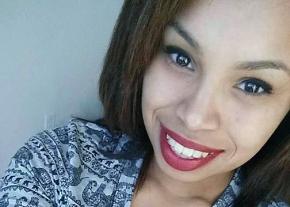She asked for help and wound up dead
reports on the circumstances of another police killing in Washington.
RENEE DAVIS, a 23-year-old Native American mother of three young children and five months pregnant, was reaching out for help. On Friday, October 21, she sent a text message to a friend saying she was "in a bad way" and needed help with her severe depression.
Instead of finding that help, the young mother was shot to death by a King County sheriff's deputy at her home on Muckleshoot tribal lands, some 20 miles southeast of Seattle.
Details are sparse since the King County Sheriff's Office has declined to give much information. According to the Seattle Times account of the police version, two deputies went to Davis' house to do a "wellness check" after the department received a call from the worried friend who Renee had texted.
According to the sheriff's office, the two deputies knocked on the door, but there was no answer, though they could see two of Davis' three children inside. The deputies say they entered the house and found Davis holding a handgun--both of them drew and fired their weapons.

Davis was pronounced dead at the scene. Neither officer has been identified by name--they have both been placed on paid administrative leave while the case is being investigated.
Danielle Bargala, Davis' sister, says that she and her family have many questions. For one thing, Bargala said she was unaware that her sister owned a handgun, though Davis, a teacher's aide for the Head Start program, was an avid outdoorswoman and hunter, and owned a rifle.
THE KILLING of Renee Davis is the latest incident in a string of police violence against members of Native tribes in western Washington. Like Davis, many of the other victims were suffering mental health crises, but rather than getting help from police, they ended up dead.
In September 2015, Cecil D. Lacy Jr., a member of the Tulalip tribe, died in police custody on tribal lands outside Everett, Washington, about 30 miles north of Seattle. Officers used a stun gun during the encounter with the 50-year-old, who suffered from numerous physical and mental health issues, including heart disease, bipolar disorder and schizophrenia. Lacy's death was ruled an accident.
The previous April, Daniel Covarrubias, a Native man from Lakewood, south of Seattle and Tacoma, was shot five times after officers claimed they mistook the phone he was holding for a weapon. Covarrubias had been released from St. Clare Hospital earlier that night after suffering from hallucinations. An internal police investigation upheld the actions of the officers who shot Covarrubias and reinstated them to active duty.
In October 2014, Native actress Misty Upham was found dead on Muckleshoot Reservation lands, having suffered a fatal fall. While her death was initially considered a suicide, her family believes she fell while fleeing from police, who had involuntarily detained Upham previously to take her to an emergency room during a mental health crisis.
Upham's family members say they received little cooperation from the Auburn Police Department after initially reporting their loved one missing--she was eventually found by a search party made up of family and friends. The attitude of police "felt like 1950s racism in many ways," a family spokesperson told the Washington Post. "The family is concerned that Misty was considered just another Native person and treated as such."
In August 2010, Native woodcarver John T. Williams was shot five times by a Seattle police officer. Williams, who was hard of hearing and a long-time sufferer of homelessness and alcoholism, was confronted by officer Ian Birk, who ordered him to put down his legal three-inch carving knife. Footage from a squad-car dash-cam showed that Birk gave Williams 4.6 seconds to comply--and then opened fire when he didn't.
A Firearms Review Board found the shooting to be "unjustified"--but the King County prosecutor's office declined to bring charges against Birk.
THESE CASES illustrate the all-too-often deadly consequences of encounters with police for Native Americans, especially those suffering from mental health issues. And the police are rarely, if ever, held accountable. Between 2004 and 2015, 213 people were killed by on-duty police in Washington state--but only one police officer was ever charged.
The situation in the Pacific Northwest is reflected on a national scale in every detail.
According to the Center on Juvenile and Criminal Justice, based on an analysis of data from 1999 to 2011, Native Americans are the most likely racial group to be killed by law enforcement. When researchers break down the statistics by age group, African American men aged 20 to 24 are the most likely victims of police murder.
The statistics on police and mental health issues are also appalling. In the first half of 2015, one in four murder victims of police were suffering a mental health crisis, according to a Washington Post investigation. In the vast majority of these deaths, police weren't responding to calls about a crime being committed, but to pleas from friends and family members concerned about their loved ones harming themselves.
The eruption of the Black Lives Matter movement has exposed the ongoing epidemic of police violence against people of color for people around the country and the world. Since then, many Native Lives Matter actions and campaigns have emerged as well. Those committed to ending police violence need to work to unite the struggles of all people of color against police and systemic violence.


